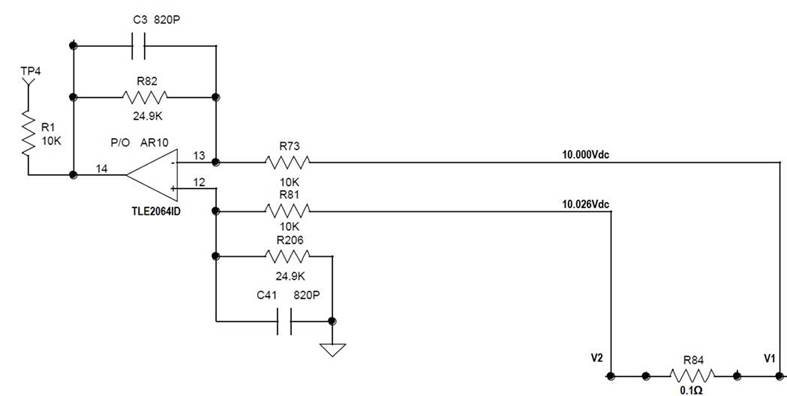HI, team: My customer is using TLE2064ID as a differential amplifier with 26mV across the input. Approximately 10V at V and 10.026 at V-
The rail voltages are set to /-15V.
The gain analyzed in our circuit should be 2.5 but they are measuring 3.0.
I can send schematics.
We need help determining the possible cause.
He could not send the entire circuit but this is part of a closed loop system. For troubleshooting purpose, he had removed a component so the circuit can be troubleshot as an open loop.
He measured the rail voltages to be ±15V. V1 and V2 can vary depending on the input but it will typically be around 10V with V2 With Respect To V1 being around +26mV. The gain of this circuit should be 2.5. However, when he tested the circuit the gain was measured to be 3.





